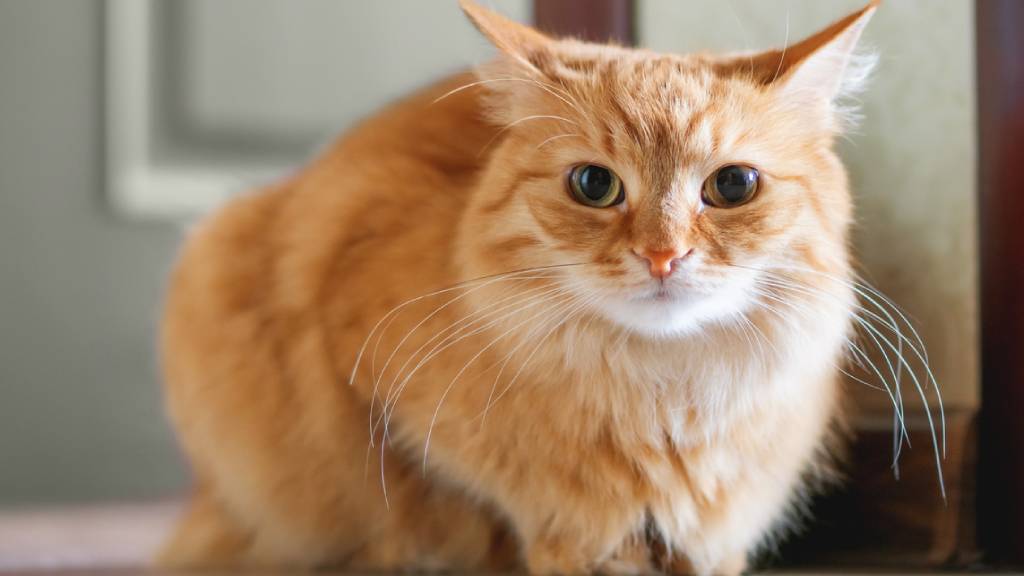6 ways to tell if your cat is suffering from stress

Cats are fascinating animals and we’re often intrigued by some of their unique antics, but it’s important to understand that, like us, cats can suffer from stress. In fact, chronic (or long-term) stress underlies most behavioural problems in cats and can also lower their immunity and lead to a range of diseases.
With all pets, we can only recognise when they’re feeling stressed by observing their behaviour because they can’t tell us otherwise! It’s usually obvious when a cat is experiencing acute stress due to some unexpected incident or threat – they typically crouch, hide, flatten their ears, arch their backs and yowl or hiss. The kind of stress that causes harm, however, is chronic stress and the signs of chronic stress in cats can be subtle – cats may withdraw and become unusually quiet rather than showing the more obvious behaviours we see in other species.
For this reason, it’s essential as a pet owner to identify any of the changes in patterns of behaviour listed below that may indicate your furry friend is stressed and to be aware that these could also be caused by a medical condition. The next step is to seek professional advice from your veterinarian, who will treat any underlying medical issues, identify other potential sources of stress and advise you how to keep your cat happy and healthy.
#1: Toileting
Toileting in the wrong place is definitely a sign that something is wrong. Your cat may be reacting to some change in the household, the cleanliness or position of the litter tray or competition for litter trays, but inappropriate toileting can also be a sign of an underlying medical problem such as urinary tract or gastrointestinal disease (often with diarrhoea or constipation).
Urine spraying inside the house can also indicate both stress and underlying medical problems such as cystitis. Other changes in cat toileting such as more frequent or painful toileting are further signs that a medical problem needs to be ruled out. Examples include urinary tract infection, food intolerance, internal parasites or diabetes. And if you see your cat straining to urinate without producing urine, or passing small amounts of urine frequently, seek urgent veterinary attention as this could indicate a life-threatening urinary blockage.
#2: Grooming
Whatever your cat’s fur length, stress can cause them to lose interest in their usual grooming or to over-groom obsessively. Over-grooming leads to bald spots from pulling out hair, most commonly around the belly, legs, inside the back legs and along the flanks. It may be accompanied by excessive scratching and compulsive licking. Over-grooming in cats can be their attempt to relieve stress and can also be caused by underlying skin problems (such as flea allergy), other diseases or pain.
#3: Eating
Your cat may over or under-eat (due to lack of appetite) when stressed, but changes in eating can also be caused by a variety of medical problems, so requires veterinary attention.
#4: Vocalisation
Cats may become more or less ‘vocal’ when stressed, such as by howling, hissing, growling or meowing in a distressed manner, or by going unusually silent. This may become an ongoing problem if the underlying source of stress, pain or illness is not addressed, so seek veterinary advice if you can’t identify an obvious cause.
#5: Routines
Look out for any change to your cat’s normal routine. This may include sleeping or resting for longer periods, loss of interest in play or spending more time than usual indoors (if they have outdoor access).
#6: Personality
Personality changes can also tell us when something is not right with our cats. They may appear unusually withdrawn, hide and become either more clingy or socially withdrawn with us, even giving mixed signals about whether they want to approach or withdraw from company. Cats that are stressed and/or sick or in pain can become aggressive towards their owners or towards other cats in the household.
Always seek proper advice from a vet
Using these tips along with your knowledge of your cat’s usual behaviour will help you to identify any changes that may indicate he or she is stressed, but because these signs can also be due to illness or pain, seeking veterinary advice is the safest approach.
Another thing that you can do right now to help protect your pet is to consider pet insurance. With the right cover in place, you won’t need to think twice about getting your cat the care they need.
Find out more about Real Pet Insurance.
Ready to insure your cat from unexpected eligible vet bills?
GET A QUOTE23 Apr 2021